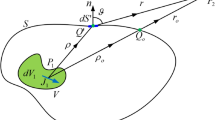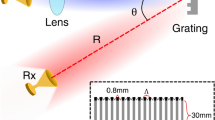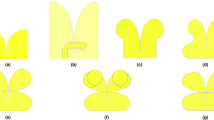Abstract
WHILE signals from distant very-high and ultra-high frequency transmitters were being monitored on June 26, 1954, a thunderstorm occurred in the region of the receivers. The transmitters, which operated at 49, 91, 173 and 492 Mc./s., were some two hundred miles from the receiving site. Fig. 1 shows a portion of the signal amplitude records obtained during the storm. The speed of response of the receivers was limited by one half-second time constant of the recorders. A single five-element Yagi antenna was used with each of the 49, 91 and 173 Mc./s. receivers, and a twelve-foot paraboloid reflector antenna was used with the 492 Mc./s. receiver. All antennæ were horizontally polarized and were directed towards the transmitters.
This is a preview of subscription content, access via your institution
Access options
Subscribe to this journal
Receive 51 print issues and online access
$199.00 per year
only $3.90 per issue
Buy this article
- Purchase on SpringerLink
- Instant access to full article PDF
Prices may be subject to local taxes which are calculated during checkout
Similar content being viewed by others
References
Isted, G. A., Nature, 171, 617 (1953). Hewitt, F. J., Proc. Phys. Soc., B, 66, 895 (1953). Tilton, E. P., QST, 38, 61 (1954).
Author information
Authors and Affiliations
Rights and permissions
About this article
Cite this article
HAY, D., HARTZ, T. Thunderstorm Signals at Very-high Frequency and Ultra-high Frequency. Nature 175, 949–950 (1955). https://doi.org/10.1038/175949a0
Issue date:
DOI: https://doi.org/10.1038/175949a0



